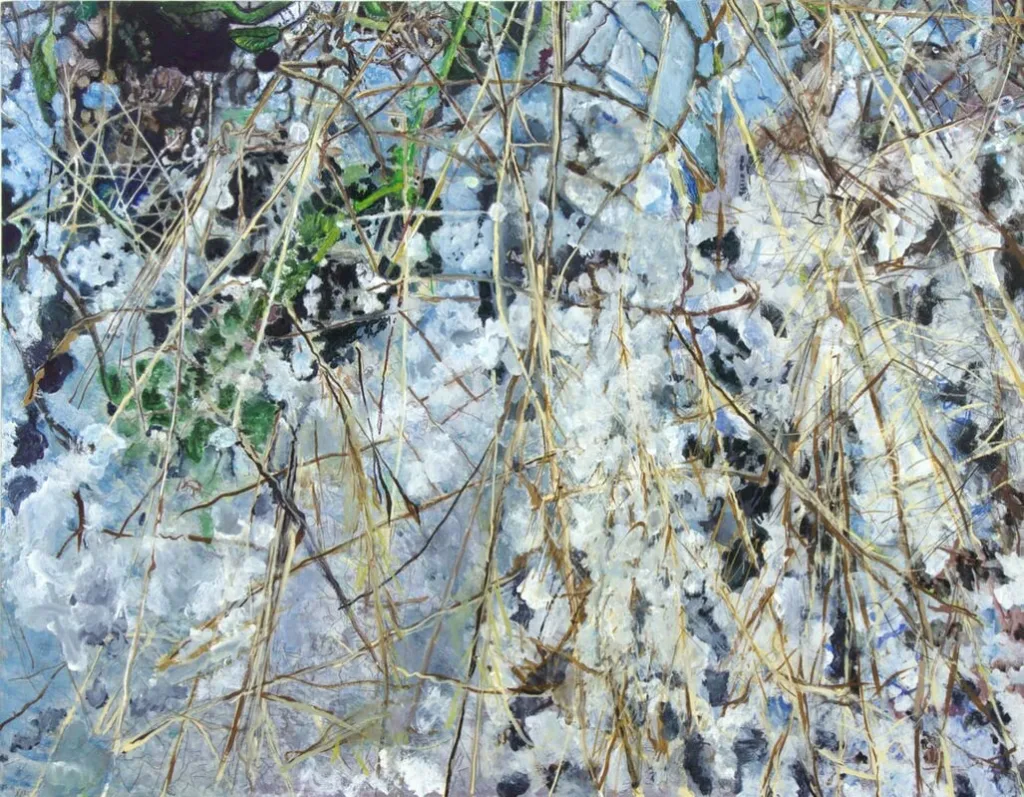Jim received his B.A. in Fine Art from Bard College. He has shown in Honolulu, San Antonio, Memphis, and in the Boston area. He is represented by Fountain Street Fine Arts in Boston.
“In 2009, I began Planters Project. The concept was to fill planters with “wild” dirt – dirt taken from neglected/disturbed areas around my studio in Medford, MA, then see what grows.
I struggled with the whole “Is this art?” question, so I put some token sculptural element in the planters with the notion that said element would be engulfed and eventually obscured by the growth. I suppose it has to do with the ol’ Man vs. Nature thing, that totally tedious discussion ranging from Eden to Apocalypse, and we’ve all heard it before. It became something quite different.
What poured out of the dirt over the next several months amazed me. Not just the growth of X, but the growth and death of X, then the growth of Y taking its place. What began as the pursuit of one idea – to see how the weeds would obscure our monuments – became how the landscape within the planter itself changed throughout the season. If one purpose of Art is to abstract from Life details that draw attention to things often overlooked, then the changing nature of Nature is the real subject of Planters Project.
Over the next several years, the shapes and sizes of my planters changed from small garden planters to larger installations built into the earth itself.
When I began the write-up of the first season in 2009, I realized I did not know the names of any of the weeds except the dandelion. That seemed immoral, so since 2009, I’ve been obsessed with identifying every weed I see. One of the first I identified was a sow thistle growing from a crack in the sidewalk in front of my studio. I was so taken by the leaf structure, that I made a few drawings, then painted it.
As I reviewed the photos I’d taken of weeds, I noticed that many took on elements of my college studies in Abstract Expressionism, namely, the all-over image pressed up flat against the picture plane. I called these “Footscapes” because they are what you see when you look down in front of your feet. That angle, devoid of horizon, was an interesting way to approach the structure of landscape. And of course I have violated the “flatness” by attempting to reveal the spacial passages from bud to dirt.
As I continued to study weeds, they challenged me to reveal their details. I found that in early Spring, some flowers can be seen only from your knees. It is this quality of seeing more as you look more that I want to infuse into my paintings.”

